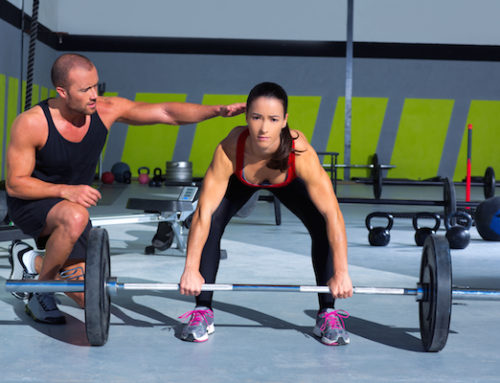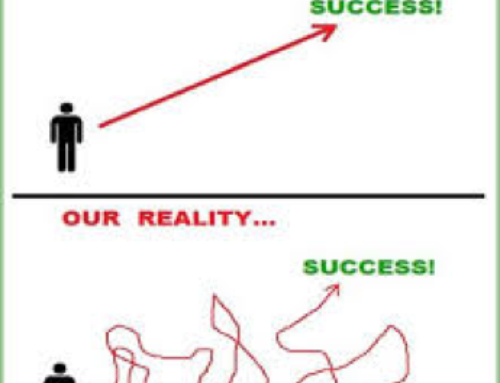 As the Australian winter running season draws to a close, the warmer weather brings the start of the multisport season. If you haven’t had your first taste of multisport racing, chances are you know someone who has taken up the challenge. Over the last decade participation in triathlon and multisport events has more than doubled with the biggest increase in the last three years. Ironman races, half ironman (70.3) and adventure races now sell out in a few minutes. It’s hard to believe that it’s now harder to get a registration in an ironman event than it is to get Beyoncé tickets!
As the Australian winter running season draws to a close, the warmer weather brings the start of the multisport season. If you haven’t had your first taste of multisport racing, chances are you know someone who has taken up the challenge. Over the last decade participation in triathlon and multisport events has more than doubled with the biggest increase in the last three years. Ironman races, half ironman (70.3) and adventure races now sell out in a few minutes. It’s hard to believe that it’s now harder to get a registration in an ironman event than it is to get Beyoncé tickets!
The triathlon boom has been particularly big in Western Australia. Triathlon WA memberships rose from 1120 in 2003 to 3114 in 2013, a huge increase, considering you don’t have to be a member to participate in races. So we are not just talking about one-off participants.
The beauty of triathlon and multisport racing is that there is something for everyone. Events feature mini distance, novice, kids, junior, teams, short course, long course, open categories and elite races. No matter what fitness level or age, there is a race suitable to your abilities.
Take Ellie Mathers for example. Five years ago her friend, Sarah, asked her be the runner in a sprint distance triathlon after their runner pulled out with an injury. With three women on the team Ellie would have to complete a 5km run after Sarah completed the 750m swim and their cyclist completed the 20km bike leg.
“I was running 5kilometres about three times a week and doing a boot camp session on the weekend, so I was confident I could put in a reasonable time for the team,” says Ellie. She did. The team finished second overall and Ellie was bitten by the triathlon bug.
“I loved the atmosphere on race day. It wasn’t like a fun run, there was such a good vibe, it felt like a community,” said Ellie. After the taste of success in the team event Ellie entered an enticer (or novice) race (300m swim, 11km bike and 2.5km run) the following month. “It’s fair to say after my first individual race, I was hooked.”
Three years on, Ellie has now completed 12 sprint distance triathlons, two Olympic distances and run in a team in the Busselton half ironman. “The best thing about triathlon is that I get variety in my training. I know I have to put in at least two sessions per discipline per week and I can incorporate my cycling training into my day by riding to work,” says Ellie.
The sport is attracting people who never thought they could do it but after completing that online registration the daunting task of training for the inevitable begins. “For me, it wasn’t easy because I was travelling for work a lot but I would tell myself to just get in an hour of something every day,” Ellie said. “If I was travelling, I could go still go running and possibly swim. If I was home, I could cycle to and from work.”
Ellie’s story is not uncommon. Triathlon and multisport events have become popular for people who have established themselves in their career, have a family, or are fairly settled in their lives, professionally and personally, and they’re looking for a new challenge. The average age of triathlon participants is 38; so many people are drawing from sports and activities the enjoyed as a kid and trying to incorporate them into a challenge in adult life. Another draw is the ability to cross-train. The fact that you’re cross-training is much healthier, so you’re not doing the same repetitive motion with your body day in and day out. Having the option to swim on a day when you’re sore from running or to swim and bike when you’re nursing an injury is much better for you.
It’s rare to be proficient in the swim, bike and the run and therein lies the beauty of triathlon. Most people will have a weak leg of their race, the part of the race they struggle with and for others this is their time to shine. This evens out the field somewhat. One competitor might be struggle through the swim, put in a fast effort on the bike and an ‘ok’ effort on the run and still finish with a great result in triathlon. You can have had three different experiences in the one race and making through all those and finishing is a rewarding experience. The aim is to improve bit by bit on the weaker areas and see a vast improvement in overall finishing times.
So what does it take to train for triathlon and multisport events?
The key to training for multisport events is timing and consistency. If you are or have been a swimmer, bike rider or a runner, work on the disciplines that you’re not so good at. Although it is important to work on all three aspects of triathlon, spending time on your weaknesses will get you to the finish line.
A good rule of thumb is train each discipline twice a week including a ‘brick session’ that incorporates two disciplines back to back e.g. ride/run. These sessions help to get the body accustomed to change in movement pattern. With two training sessions a day, it’s important to always have a rest day. If you were to miss a session during the week, try to make it up on another day but not at the expense of a rest day.
Know your pace
In order to improve and get faster over time you need to be training at and above threshold for parts of the majority of training session. If you were to just log the distance at a medium pace for every session, fitness is only ever going to improve marginally and the body doesn’t become accustomed threshold and race pace. The easiest way to know your pace is to do a time trial in a race setting like a fun run or at a squad session.
For the run and the swim it’s helpful to know what your average pace is over a set distance. Once you have your time you can use a VDOT calculator to find out your VDOT score and recommended training paces. For example, say your 5km run time trial was completed in 30 minutes, giving an average of 6minutes per km. Your training paces would be as follows:
Easy (65-79%) – 7:43km per km
Medium (80-90%) – 6:43mins per km
Threshold (88-92%) – 6:16mins per km
Interval (92-100%) – 5:48mins per km
If you are doing an interval session that week, you know exactly what pace each interval should be at.
Eg. 15 mins warm up and cool down
2 x 800 @ threshold 30 secs
2 x 400 @ interval pace 20 secs
2 x 1 km @ marathon pace 45 secs
2 x 400 @ interval pace 20 secs
2 x 800 @ threshold 30 secs
A longer session could be a 60min run with 4 x 4 minute threshold efforts with 2 minutes recovery.
The easiest way to gauge pace on the bike is heart rate. Threshold is 80% of maximum heart rate and sub threshold is 70% of maximum heart rate, trying to maintain a standard cadence of 90 rpms.
The best way to ensure you are training efficiently and effectively is to train with a squad. Triathlon clubs, run groups, swim squads and group rides cater for athletes of all levels and the benefit of a planned, paced session every week is invaluable.
What does a typical training program look like?
When planning a training program you need to work out what are the best times of the day to train are for you. Your program has to suit your lifestyle or you’ll never stick to it! Incorporating your training into your day like riding to and from work or running at lunch time is a great timesaver. Below is a basic training plan:
Popular Races
November – Act Belong Commit Augusta Adventure Race, Augusta WA
Triathlon SunSmart Ironman 70.3 Mandurah
December – Triathlon Ironman WA Busselton, WA
January – Triathlon Albany Half Triathlon Middleton Beach, Albany, WA
State Olympic Distance Triathlon Championship, Mandurah WA
February – V Adventure Race, Fremantle WA
March – Women’s Triathlon, Hillarys WA
Karri Valley Triathlon, Pemberton WA







